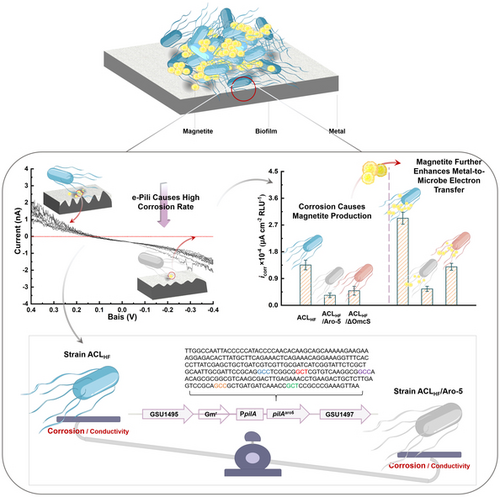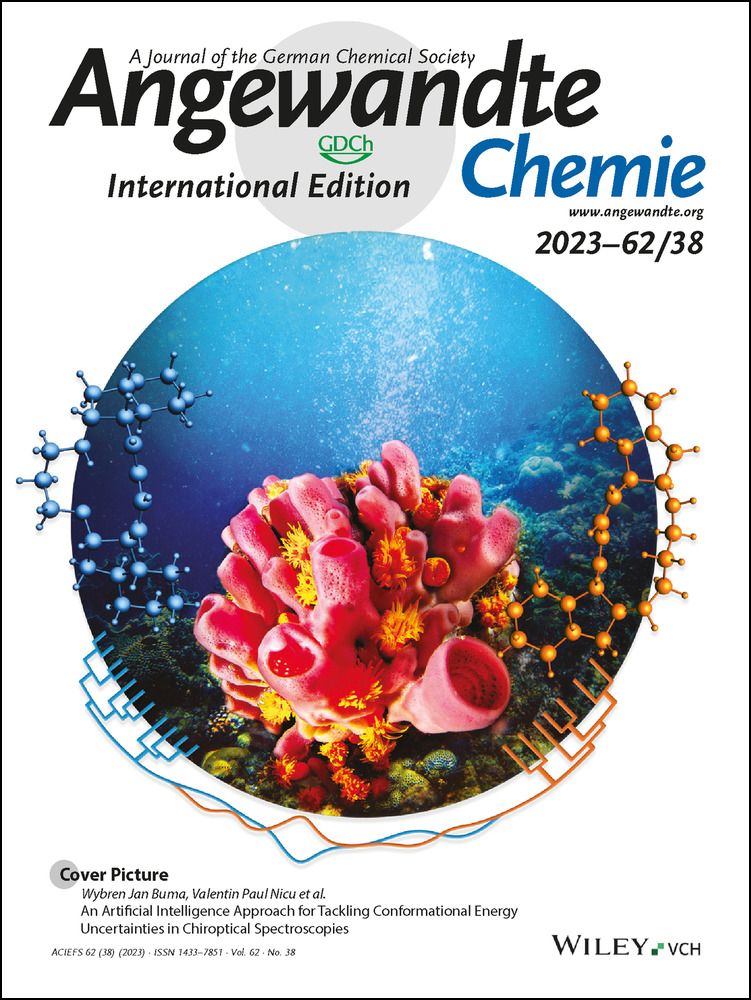Accelerated Microbial Corrosion by Magnetite and Electrically Conductive Pili through Direct Fe0-to-Microbe Electron Transfer
Graphical Abstract
Electrically conductive pili (e-pili) and magnetite facilitate Geobacter sulfurreducens electron uptake from metallic iron. The complex interactions between e-pili, cytochromes, and magnetite are actively researched in electrobiocorrosion. Magnetite, a common corrosion product, enhances electrobiocorrosion through a positive feedback loop. It reduces the need for cells to create electrical contacts, leading to high corrosion rate.
Abstract
Electrobiocorrosion, the process in which microbes extract electrons from metallic iron (Fe0) through direct Fe0-microbe electrical connections, is thought to contribute to the costly corrosion of iron-containing metals that impacts many industries. However, electrobiocorrosion mechanisms are poorly understood. We report here that electrically conductive pili (e-pili) and the conductive mineral magnetite play an important role in the electron transfer between Fe0 and Geobacter sulfurreducens, the first microbe in which electrobiocorrosion has been rigorously documented. Genetic modification to express poorly conductive pili substantially diminished corrosive pitting and rates of Fe0-to-microbe electron flux. Magnetite reduced resistance to electron transfer, increasing corrosion currents and intensifying pitting. Studies with mutants suggested that the magnetite promoted electron transfer in a manner similar to the outer-surface c-type cytochrome OmcS. These findings, and the fact that magnetite is a common product of iron corrosion, suggest a potential positive feedback loop of magnetite produced during corrosion further accelerating electrobiocorrosion. The interactions of e-pili, cytochromes, and magnetite demonstrate mechanistic complexities of electrobiocorrosion, but also provide insights into detecting and possibly mitigating this economically damaging process.
Conflict of interest
The authors declare no conflict of interest.
Open Research
Data Availability Statement
The data that support the findings of this study are available from the corresponding author upon reasonable request.





